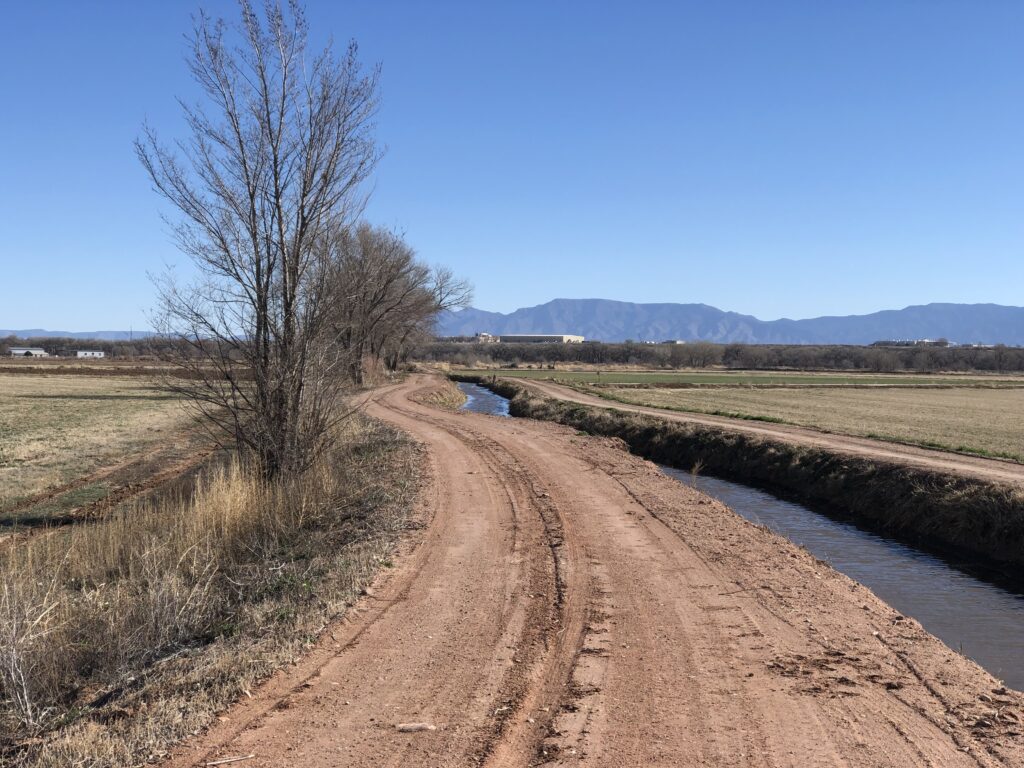Six days later, Lázaro Quintana, the mayordomo, opened the headgate and sent the first water of the new season down the five-mile long ditch, empty since the November before.
When the brown water finally arrived four hours later at the bridge, the tip of its foamy tongue was bearing along a small plum branch that a ditch worker had thrown on the upper side of the ditch bank, where the wind had blown it back down into the channel. It was one of many such prunings that Lázaro had inevitably failed to catch with his rake, but it was the first one to snag on the cottonwood sapling at the mouth of the small bridge. The splayed structure of its short branches provided a fine armature for the next arrival, some plastic wrap and a Styrofoam meat tray that the village dogs had fished out of a Clapp garbage bag. Next came a small tumbleweed, or half of one because a passing car had clipped it while it was blowing across the highway into the ditch. Next, in short order, a flotilla of Greenpeace pamphlets and bumper stickers bearing images of whales and dolphins and seals and sea birds in blues and greens, just beneath the surface of the brown water, some of which flattened themselves against the sinking tumbleweed and plastic wrap and the prongs of the plum branch.
The late Stanley Crawford, from his loving book Village.


Thanks for sharing this, John.